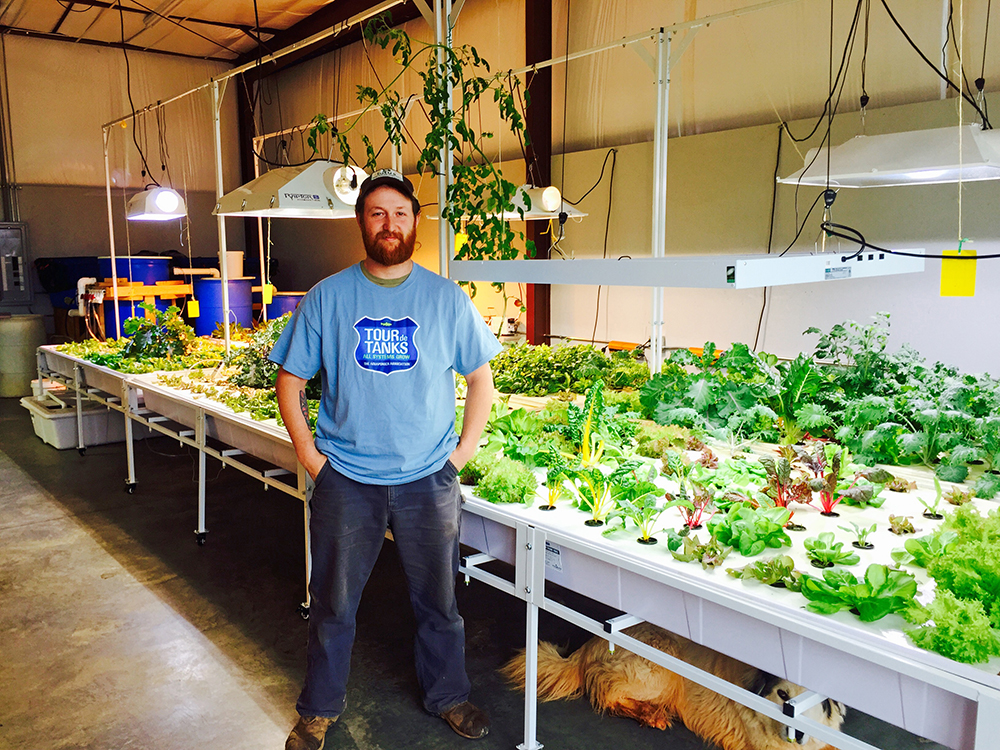Aquaponics in a Food Forest: A Perfect Match for Sustainable Homesteading
When it comes to sustainable agriculture, finding innovative and efficient ways to produce food is key. Aquaponics, a combination of aquaculture (raising fish) and hydroponics (growing plants without soil), has gained popularity as an environmentally friendly method that maximizes resources and yields high-quality produce. In the context of a food forest, where diverse edible plants grow together in harmony, aquaponics can play a vital role in creating a self-sustaining ecosystem. In this article, we will explore the benefits and considerations of incorporating aquaponics into your food forest.
1. What is Aquaponics?
Aquaponics is an integrated system that combines fish farming with plant cultivation in a symbiotic relationship. The process begins with raising fish in tanks or ponds, where they generate nutrient-rich waste. This waste serves as natural fertilizer for the plants growing hydroponically – with their roots immersed directly in water. As the plants absorb these nutrients, they purify the water before it circulates back to the fish tank, completing the cycle.
2. Advantages of Aquaponics
2.1 Water Conservation
One significant advantage of aquaponics is its remarkable water efficiency compared to traditional farming methods. According to studies by The Food and Agriculture Organization (FAO), aquaponic systems use approximately 90% less water than soil-based agriculture while still producing equivalent or higher crop yields.
2.2 Nutrient Recycling
The closed-loop nature of aquaponic systems allows for effective nutrient recycling within the ecosystem itself. Fish waste provides essential nutrients like nitrogen and phosphorus necessary for plant growth, reducing dependence on external fertilizers.
2.3 Year-Round Harvests
With controlled environments such as greenhouses or polytunnels enclosing your aquaponic system within your food forest, you can extend growing seasons and harvest fresh produce throughout the year. This feature is particularly advantageous in regions with harsh climates or limited growing seasons.
2.4 Increased Productivity
Aquaponics can yield more food per square foot when compared to traditional gardening methods. The constant availability of nutrients and optimal growing conditions result in faster plant growth rates, translating into higher crop yields within a smaller footprint.
3. Integration with a Food Forest
3.1 Biodiversity Enhancement
Integrating aquaponics into your food forest creates additional layers of biodiversity, enhancing the overall ecosystem’s resilience and functionality. The combination of fish, plants, and beneficial microorganisms fosters a balanced environment where each component contributes to the well-being of others.
3.2 Natural Pest Control
Food forests thrive on diversity, creating natural pest control mechanisms by attracting beneficial insects that prey on pests or act as pollinators. When combining aquaponics with a food forest design, you can harness this natural balance to keep pests at bay without relying heavily on synthetic pesticides.
3.3 Nutrient Cycling
Incorporating an aquaponic system complements the nutrient cycling already occurring within your food forest ecosystem. The fish waste becomes an additional source of nutrition for surrounding trees and shrubs while simultaneously nourishing hydroponically grown plants – ensuring that no valuable resources go to waste.
4. Considerations for Aquaponics in a Food Forest
4.1 Space Requirements
While aquaponic systems can be designed to fit various sizes and scales, it’s important to consider space limitations within your food forest before embarking on such a project. Ensure adequate space for tanks or ponds that accommodate fish comfortably while allowing room for plant cultivation areas.
4.2 Energy Inputs
Aquaponic systems require energy inputs for water circulation, temperature regulation (if not using passive solar techniques), and supplemental lighting if operating indoors or during low-light seasons like winter months in some regions. Evaluating available energy sources and their sustainability is crucial for minimizing your ecological footprint.
4.3 Species Selection
When choosing fish species for your aquaponic system, consider compatibility with the local climate and ecosystem. Opting for native or locally adapted fish species reduces the risk of introducing invasive or non-native species that may negatively impact surrounding ecosystems if accidentally released.
5. Getting Started with Aquaponics in a Food Forest
5.1 Design Considerations
Work with permaculture principles to design an aquaponic system that seamlessly integrates into your food forest landscape. Consider factors like sunlight exposure, wind protection, water availability, and proximity to other elements within the food forest.
5.2 Equipment and Setup
Aquaponics systems typically consist of tanks or ponds (for fish), grow beds (for plant cultivation), plumbing infrastructure, pumps, filters, and monitoring equipment. Research different system designs such as media-based, raft-based, or nutrient film technique (NFT) to determine what suits your needs best.
5.3 Fish Selection
Choose fish species based on your climate zone and personal preferences – considering temperature tolerance, growth rate, feed requirements, market value (if intending to sell), and compatibility with plants you wish to grow.
5.4 Plant Selection
Select plant varieties that thrive in hydroponic conditions while complementing the existing food forest structure. Leafy greens like lettuce or herbs such as basil are commonly grown in aquaponics systems due to their high nutrient demand and rapid growth rates.
6. Conclusion
Aquaponics offers an exciting opportunity to enhance the productivity and sustainability of a food forest by creating a self-contained ecosystem where plants and animals work together harmoniously. By implementing this innovative method into your homesteading practices, you can enjoy fresh produce year-round while reducing water consumption and waste generation associated with traditional farming methods.


Leave a comment